Abstract
Objectives
This study aimed to measure the efficacy of different tooth-brushing methods for removing plaque in Korea.
Methods
This study was conducted with the approval of the Institutional Review Board (IRB) of the Seoul National University School of Dentistry (S-D20180021). Thirty participants aged between 19 and 30 years, who did not have periodontal disease, were enrolled in this observational study. Participants were given the same type of toothbrush and toothpaste and asked to brush their teeth as they usually would. During brushing, participants were recorded with a camcorder that was attached to a mirror. Participants were aware they were being recorded. After they had finished brushing their teeth, a dental plaque staining and oral plaque index (PI) examination was performed. The PI score was measured using the Turesky modified Quigley Hein Index. Brushing methods were classified as rolling, horizontal, vertical, circling, and oblique. Skipped surfaces were recorded separately. Following this, statistical analysis was performed using SPSS software.
Results
Most surfaces of the mouth were skipped. The most commonly used brushing method was the circling method, followed by the vertical, horizontal, rolling, and oblique methods. The most frequently used method on the vestibular surface was circling, with 52.92% of the oral surface skipped. The oblique brushing method had the lowest mean PI score with a mean±SD of 1.73±0.82. The mean PI score of the skipped surfaces was the highest with a mean±SD of 2.52±0.81. We also analyzed the linear mixed model considering the different lengths of time spent brushing. Both the brushing method used and the time spent brushing had a significant effect on the PI score, but no interactions between these were observed. In areas where a horizontal brushing method had been used, the PI score was significantly decreased.
References
1. Kim JB, Choi YJ, Moon HS, Kim JB, Kim DG, Lee HS, et al. Public Oral Health. 4th ed. Seoul: Komoonsa;2011. p. 105–107.
2. Ministry of Health and Welfare. 2012 Korea National Oral Health Survey. Seoul: Ministry of Health & Welfare;2013. p. 3–672.
3. Health Insurance Review and Assessment Service. Healthcare bigdata hub [Internet]. [cited 2019 Apr 10]. Available from: opendata.hira. or.kr/op/opc/olapHifrqSickInfo.do.
4. Thylstrup A, Bruun C, Holmen L. In vivo caries models-mechanisms for caries initiation and arrestment. Adv Dent Res. 1994; 8:144–157.

5. Kidd EA, Fejerskov O. What constitutes dental caries? Histopathology of carious enamel and dentin related to the action of cariogenic biofilms. J Dent Res. 2004; 83(C):C35–38.

6. Starke EM, Mwatha A, Ward M, Argosino K, Jenkins W, Millemam JL, et al. A comparison of the effects of a powered and manual toothbrush on gingivitis and plaque: a randomized parallel clinical trial. J Clin Dent. 2019; 30(A):A24–29.
7. Colombo APV, Tanner ACR. The role of bacterial bofilms in dental caries and periodontal and peri-implant diseases: a historical perspective. J Dent Res. 2019; 98:373–385.
8. Sowinski J, Petrone DM, Wachs GN, Chaknis P, Kemp J, Sprosta AA, et al. Efficacy of three toothbrushes on established gingivitis and plaque. Am J Dent. 2008; 21:339–345.
9. Ganss C, Duran R, Winterfeld T, Schlueter N. Tooth brushing motion patterns with manual and powered toothbrushes-a randomised video observation study. Clin Oral Investig. 2018; 22:715–720.

10. Baruah K, Thumpala VK, Khetani P, Barua Q, Tiwari RV, Dixit H. A review on toothbrushes and tooth brushing methods. Int J Pharm Sci Invent. 2017; 6:29–38.
11. Rossi GN, Sorazabal AL, Salgado PA, Squassi AF, Klemonskis GL. Toothbrushing procedure in schoolchildren with no previous formal instruction: variables associated to dental biofilm removal. Acta Odontol Latinoam. 2016; 29:82–89.
12. Kim KE, Ahn ES, Han JH. Variation in the index of dental plaque removal and practice assessment after instruction on toothbrushing. J Dent Hyg Sci. 2015; 15:220–225.

13. Kim BI, Kwon HK, Kim SH, Kim YS, Kim HS, No HJ, et al. Toothbrushing methods. Kim BI, Kwon HK, Kim SH, Kim YS, Kim HS, No HJ, editors. Textbook of oral care products. Seoul: Charm-yun publishing;2010. p. 25–36.
14. Kim CH, Kim GM, Lee JY, Kwon HK, Kim BI. A comparison of tooth brushing methods recommended in different countries. J Korean Acad Oral Health. 2015; 39:195–200.

15. Winterfeld T, Schlueter N, Harnacke D, Illig J, Margraf-stiksrud J, Deinzer R, et al. Toothbrushing and flossing behaviour in young adults-a video observation. Clin Oral Investig. 2015; 19:851–858.

16. Harnacke D, Winterfeld T, Erhardt J, Schlueter N, Ganss C, Margraf-Stiksrud J, et al. What is the best predictor for oral cleanliness after brushing? Results from an observational cohort study. J Periodontol. 2015; 86:101–107.

17. Choi YG, Park DY, Jeong DB. Relationship among adequacy, awareness of the difficulty in toothbrushing and plaque score. J Korean Acad Oral Health. 2009; 33:192–200.
18. Arai T, Kinoshita S. A comparison of plaque removal by different toothbrushes and toothbrushing methods. Bull Tokyo Med Dent Univ. 1977; 24:177–188.
Table 1.
Brushing methods and plaque index average (all surfaces)
| N (%) | Plaque Index*† | |
|---|---|---|
| Oblique | 21 (4.38) | 1.74±0.82a |
| Circling | 113 (23.54) | 1.85±0.91a |
| Horizontal | 79 (16.46) | 2.06±0.7a,b |
| Vertical | 83 (17.29) | 2.24±0.79b,c |
| Rolling | 40 (8.33) | 2.44±0.64c |
| Skip | 144 (30) | 2.52±0.81c |
Table 2.
Brushing methods and plaque index average (right molars)
| N (%) | Plaque Index*† | |
|---|---|---|
| Oblique | 3 (2.5) | 2.08±0.3a |
| Circling | 31 (25.83) | 2.12±0.77a |
| Horizontal | 29 (24.17) | 2.11±0.54a |
| Vertical | 6 (5) | 2.21±0.32a |
| Rolling | 12 (10) | 2.67±0.41a |
| Skip | 39 (32.5) | 2.63±0.79a |
Table 3.
Brushing methods and plaque index average (incisors)
| N (%) | Plaque Index*† | |
|---|---|---|
| Oblique | 14 (5.83) | 1.6±0.97a |
| Circling | 50 (20.83) | 1.68±0.05a |
| Horizontal | 25 (10.42) | 1.69±0.75a |
| Vertical | 73 (30.42) | 2.26±0.83b |
| Rolling | 8 (3.33) | 2.28±1.01b |
| Skip | 70 (29.17) | 2.41±0.84b |
Table 4.
Brushing methods and plaque index average (left molars)
| N (%) | Plaque Index*† | |
|---|---|---|
| Oblique | 4 (3.33) | 1.96±0.38a,b |
| Circling | 32 (26.67) | 1.87±0.72a |
| Horizontal | 25 (20.83) | 2.35±0.68a,b |
| Vertical | 4 (3.33) | 2.04±0.75a,b |
| Rolling | 20 (16.67) | 2.37±0.57a,b |
| Skip | 35 (29.17) | 2.62±0.75b |
Table 5.
Plaque index score by difference of brushing methods and time
|
Methods, mean (95% CI) |
P-value* | ||||
|---|---|---|---|---|---|
| Oblique | Horizontal | Circling | Vertical | Rolling | |
| ―0.416 | ―0.447 | ―0.071 | ―0.050 | 0.209 | Methods: 0.010† |
| (―0.928, 0.096) | (―0.707, ―0.186) | (―0.363, 0.221) | (―0.316, 0.216) | (―0.168, 0.587) | Time: 0.001 |
| Methods×Time: 0.070 | |||||




 PDF
PDF ePub
ePub Citation
Citation Print
Print


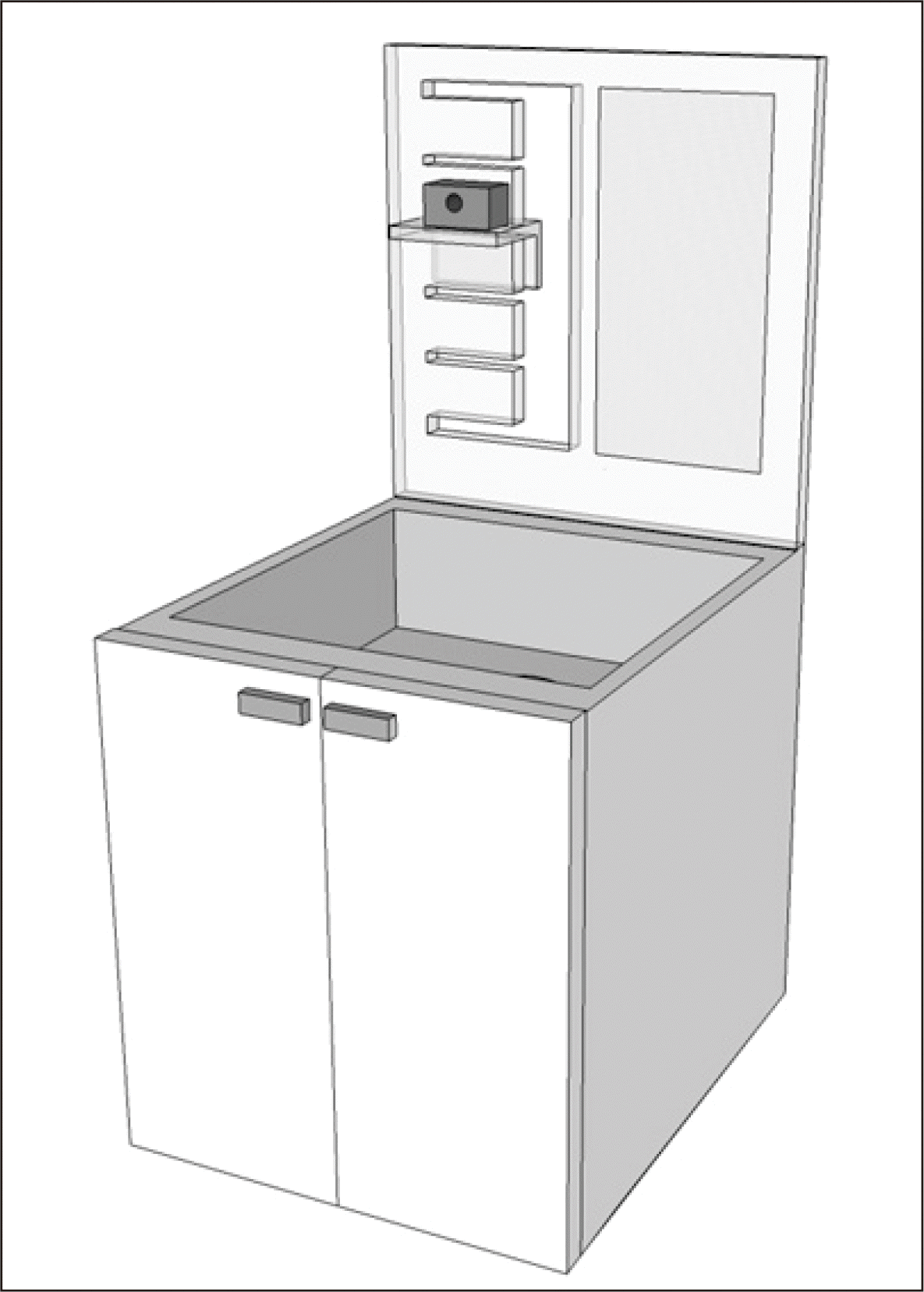
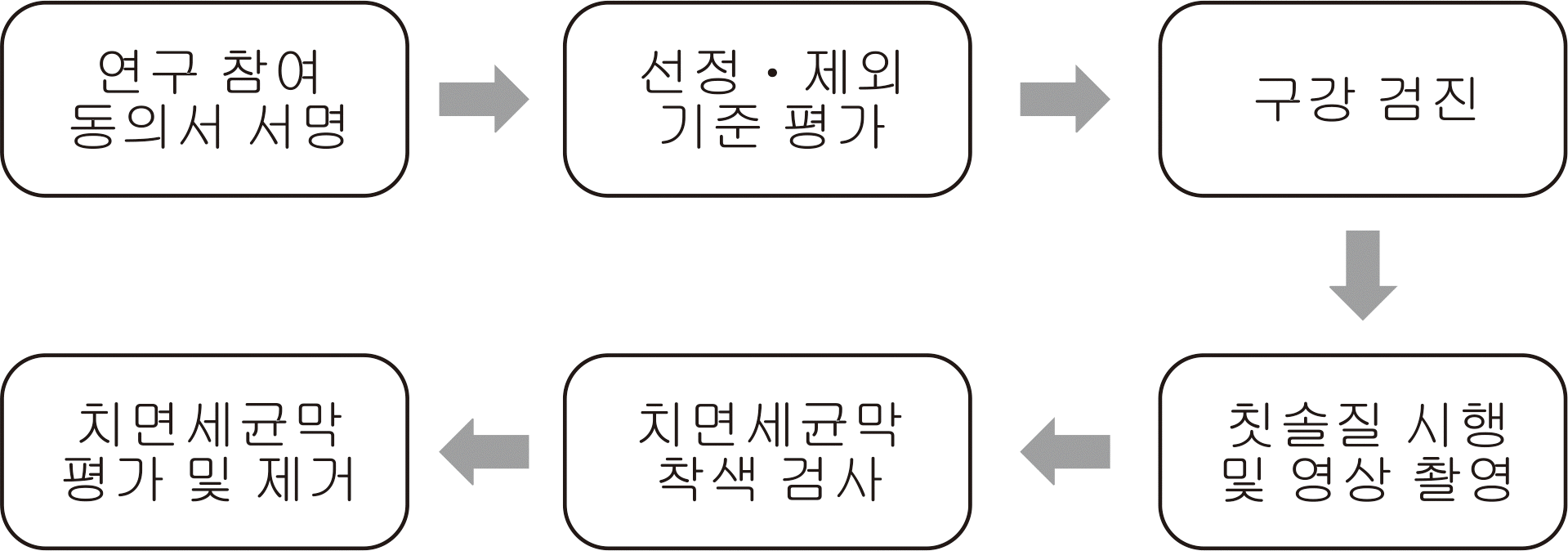
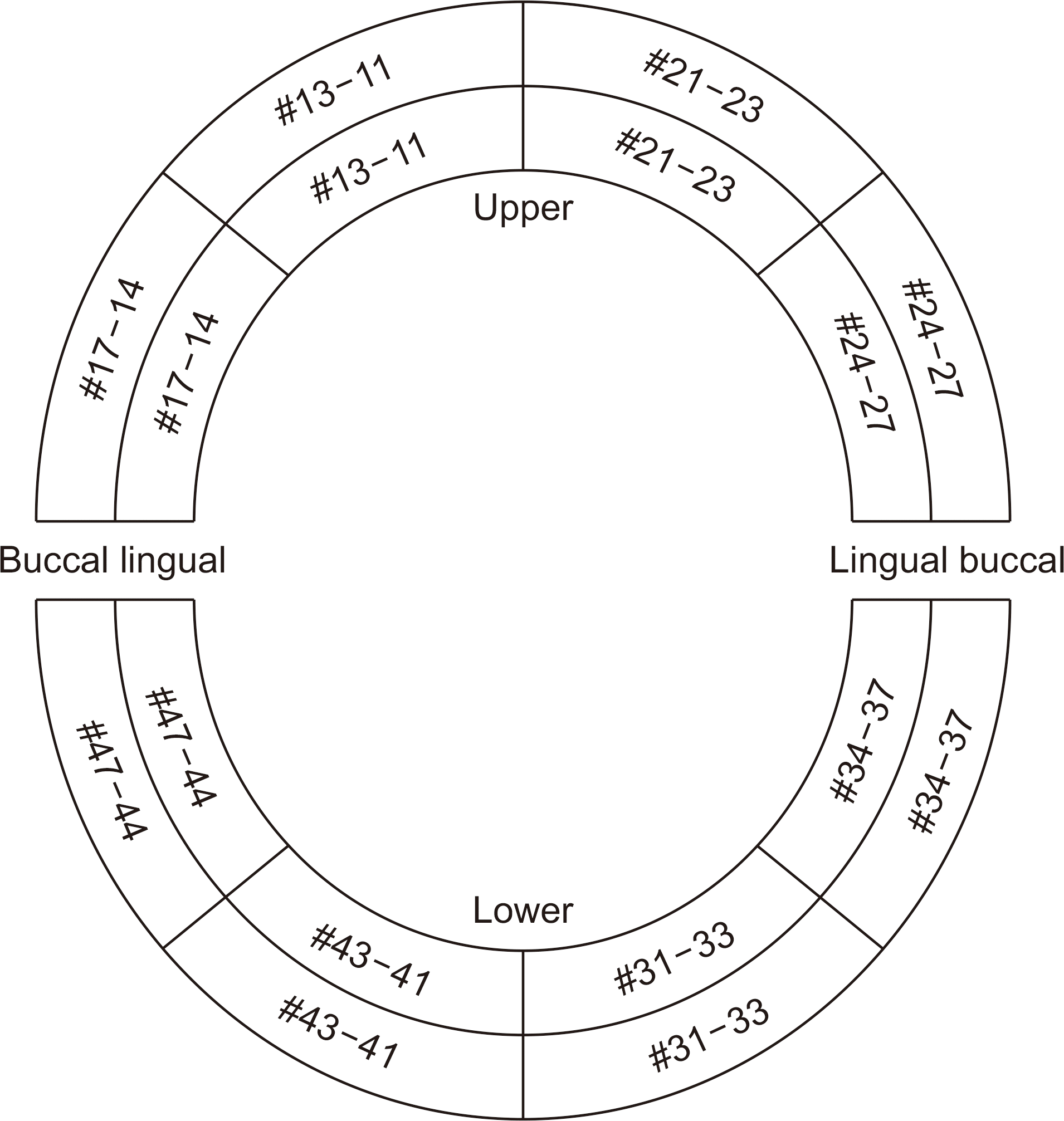

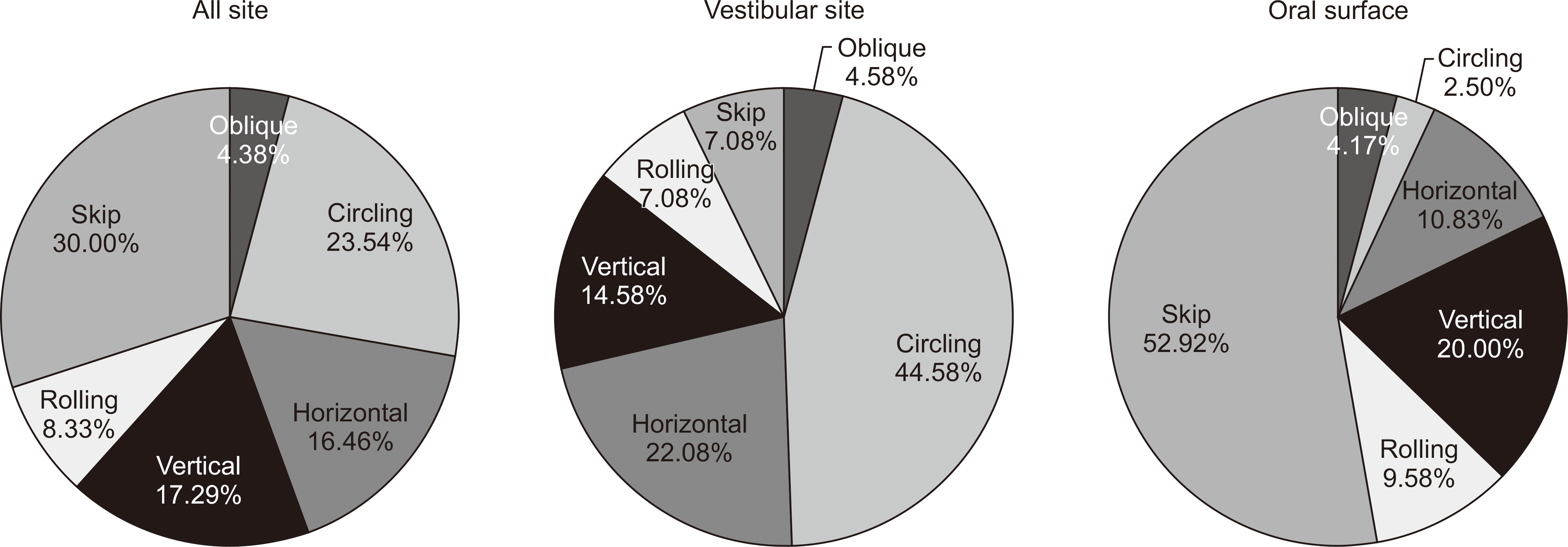
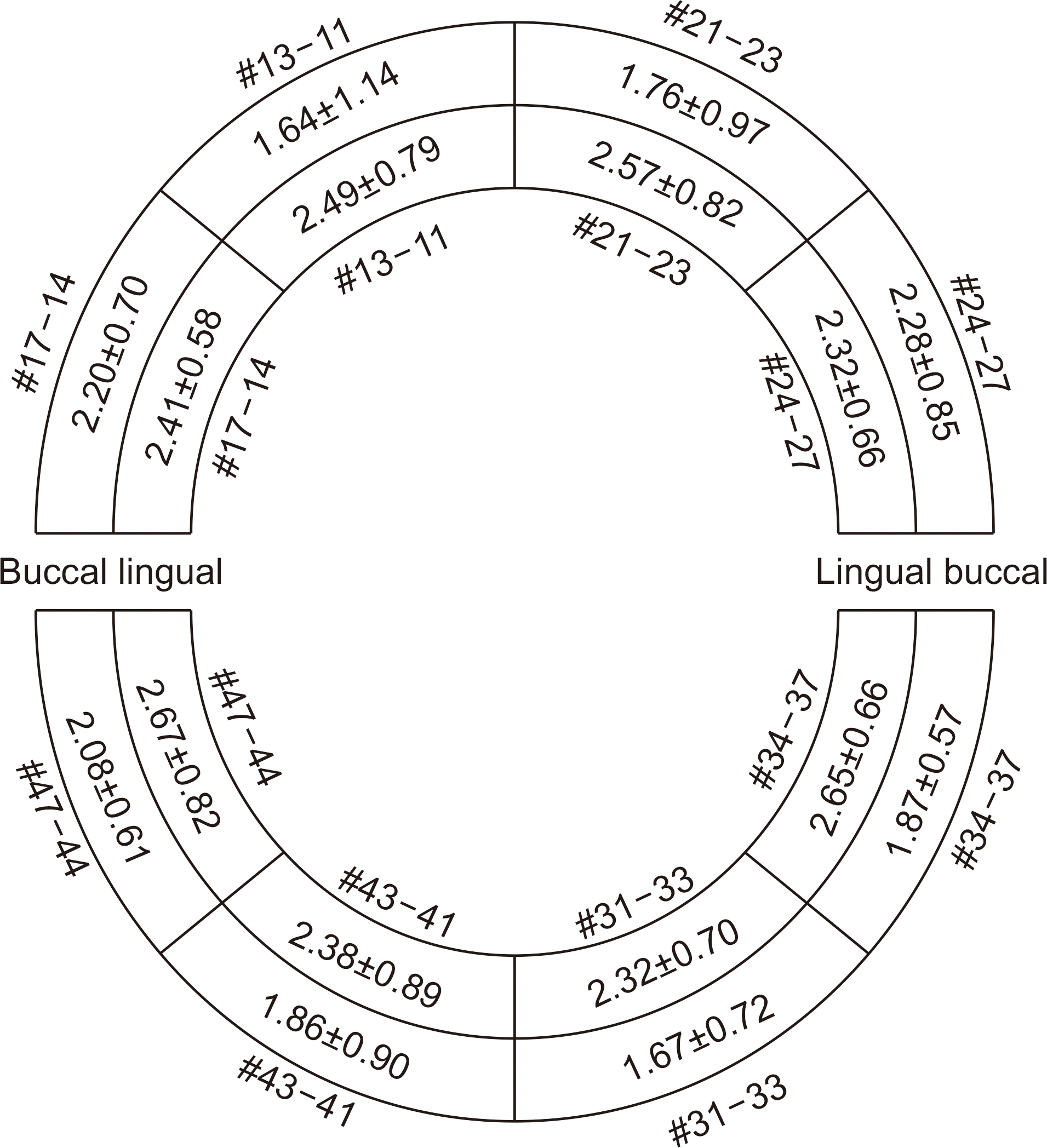
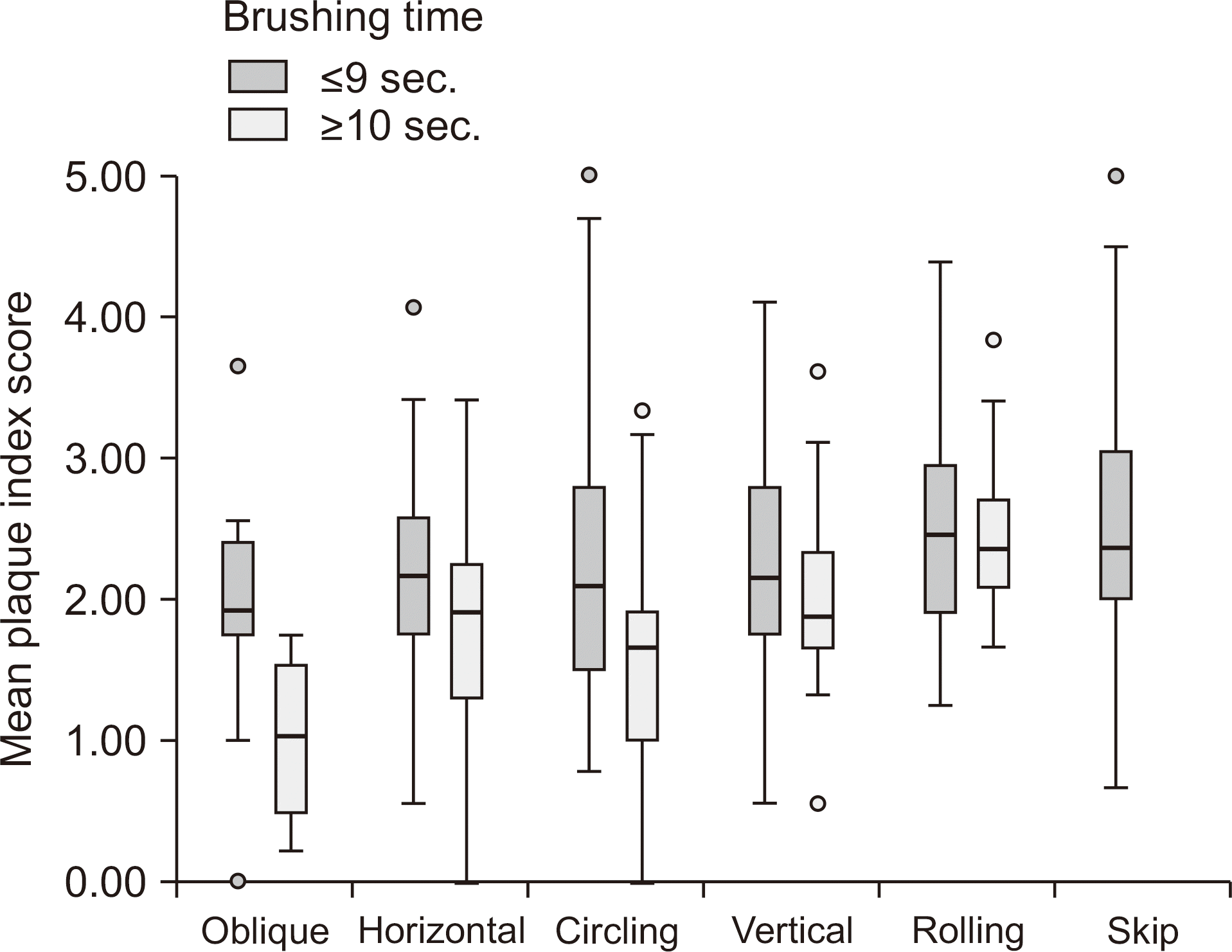
 XML Download
XML Download